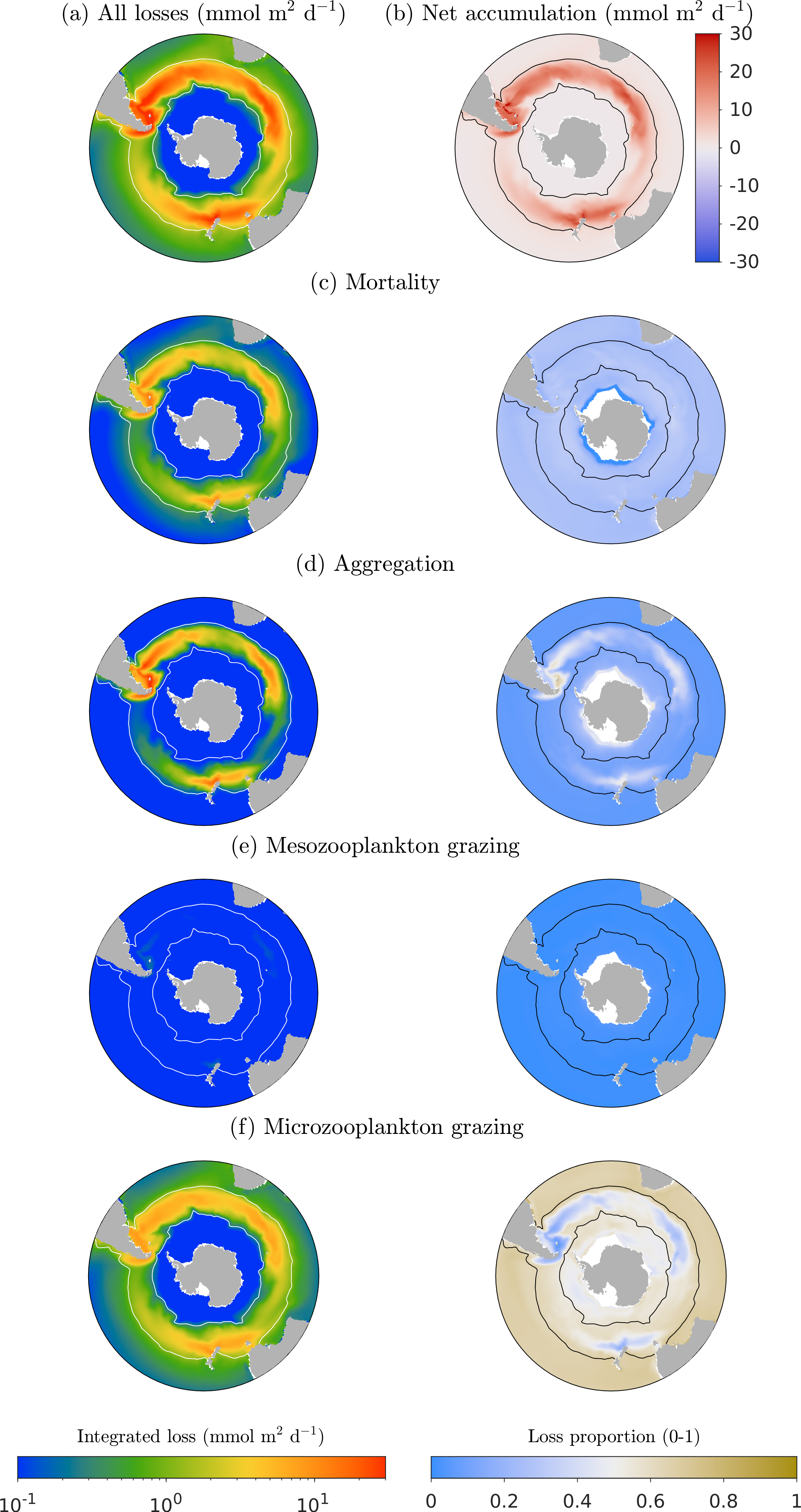Modeling Southern Ocean PIC? Contrasting temperature-growth curves for coccolithophores and their grazers is key! (New paper)
Coccolithophores, unicellular calcifying phytoplankton, grow in a region spanning the entire Southern Ocean termed the “Great Calcite Belt” (GCB). Particulate inorganic carbon (PIC) is generated through the process of coccolithophore calcification, and the GCB is thought to host over a quarter of globally suspended PIC. Sensitive to changes in temperature and ocean alkalinity, coccolithophore growth and hence the GCB are likely to be influenced by climate change, but the drivers of the emergence of the GCB are not yet well understood.
Leveraging a marine ecosystem model coupled to an earth system model that reproduces realistic spatial distributions of Southern Ocean PIC, we diagnosed the bottom-up (light, nutrients, and temperature) and top-down (mortality, aggregation, and zooplankton grazing) controls on Southern Ocean coccolithophore growth, with the aim at understanding the controls on GCB spatial extent and magnitude, and found that temperature is the largest constraint on coccolithophore extent, and that iron controls GCB magnitude.
This temperature effect was strongly linked to zooplankton grazing; at higher temperatures, the zooplankton exponential temperature function increasingly diverges from the coccolithophore temperature power-function curve. Modeling the future of the GCB will therefore likely require the temperature relationships for both coccolithophore growth and sinks to be carefully considered.

Figure: Seasonal (DJF) climatologies (integrated over top 100 m) of each coccolithophore loss term in CESM (c–f), with net accumulation (growth-losses) (b), and the sum of all loss terms (a). The contours on each subplot show the northern and southern boundaries of the GCB, defined at 0.1 μM of coccolithophore POC at the surface.
Oliver, H., Krumhardt, K. M., McGillicuddy, D. J., Jr., Mitchell, C., & Balch, W. M. (2024). Mechanisms regulating coccolithophore dynamics in the Great Calcite Belt in the Southern Ocean in the Community Earth System Model. Journal of Geophysical Research: Oceans, 129, e2024JC021371. https://doi.org/10.1029/2024JC021371